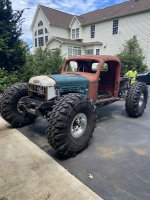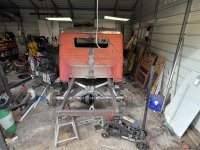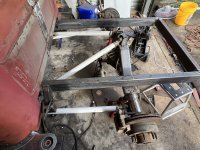Earl
Active member
- Joined
- Apr 17, 2022
- Member Number
- 5074
- Messages
- 44
I agree with you on cutting out he bottom to make the cab proportions look pleasing to the eye.That side shot with the fender on looks perfect!M brother built one and lowered the windshield base(cut and sunk into the cowl)to closer match the side window height,I just bought it made it flow better.I did the same on my PW as I thought the bottom section of the cab was too tall, took 6” off of he bottom.Looks great so far !





 . Just a couple notes to help make sure ya get the most accurate results with the calculator -
. Just a couple notes to help make sure ya get the most accurate results with the calculator -